You’ve written lots of scenes for your work in progress, but how do you know whether they work? Does your scene satisfy basic story principles? In this episode, Leslie shows you how to analyze your scenes by looking at the opening of AW Moyer’s YA fantasy story, The Grim Book.
Listen to the Writership Podcast
Wise Words on Story Structure
“Structure is nothing more than a way of looking at your story material so that it’s organized in a way that’s both logical and dramatic. Structure is a process, not a rigid format. Structure in fiction is not static, but dynamic. ”
Basic Story Form
Before we get into how to analyze a scene, I want to talk about story form from the vantage point of principles. A principle is a fundamental truth. From principles, we can develop guidelines that help us fulfill the promise of the fundamental truth as a practical matter, but guidelines exist to serve the fundamental truth, not to stand as principles themselves.
For example, a society’s constitution should identify the principles of the society, while the laws are meant to help society implement those principles. (It doesn’t always work, but that’s the main idea.)
One principle or fundamental truth about Story is that they are about change that comes through action in the face of conflict. If you’re missing one of those elements—change, action, or conflict—then you don’t really have a story, though you might have an interesting series of events. A story that works is one that meets reader expectations.
As humans, we’ve all internalized this principle as consumersof stories. Some humans have internalized these principles as writersso that they can simply sit down and write a Story that works—more or less—without having to think about the elements at work. They still need to revise, but they have an integrated sense of Story that allows them to write a story that works. The rest of us need to be more deliberate in applying the principle. We aren’t better or worse, just different. Thankfully there are people who’ve identified the elements of this principle and passed them along.
Basic Story form applies to each level of the work—from scenes to the entire story. That’s really useful because writing and analyzing scenes will help you with the macro and micro of your story. But what does that look like? A character is living life and minding their own business. One day, something happens (could be good or bad) that upsets the status quo, throwing their life out of balance to a greater or lesser extent. When this happens, a desire arises within them, and from that desire, comes a goal. They pursue the goal and face obstacles, find helpful tools, and encounter people, places, and things that seem irrelevant. An unexpected event occurs (one of those people, places, or things turns out to be relevant after all), and the character faces a dilemma. When they choose a course of action, consequences unfold.
The happening that upsets the SQ is what we call the Inciting Incident.
The obstacles and tools are Progressive Complications.
The unexpected event is the Turning Point Progressive Complication.
The dilemma is what we call the Crisis, and the decision and action are the Climax.
The consequences that unfold are the Resolution.
Analyzing a Scene
When we look at scenes, it’s useful to have a clear understanding of what happens, but this is more than just a simple summary. You want a shorthand reference that tells you what’s most important. So, we ask some questions about what happens in the scene.
What are the characters literally doing? This literal action is what’s happening on the surface.
What is the essential action of what the characters are doing? This is what’s happening beneath the surface or the subtext. We use an action verb (transitive verb) to describe the action.
Anne Hawley and I talked about essential and literal action in episode 129.
Now consider what has changed from the beginning to the end of the story. We refer to Life Value changes. A life value is a condition or state of human experience. That sounds more complicated than it is. Hot and cold, wet and dry are life values. In any given scene, there may be several life value changes, so we want to make a list and then see which one impacts the main conflict in the story.
Each content genre (for example, action, crime, love story, etc.) is anexploration of the complications we encounter in trying to meet our human needs, and each genre fits within one of the human needs tanks that come from Maslow’s Hierarchy of Needs.
Inciting Incidents Provide Clues to Life Values at Stake
Each genre has a particular event that kicks the story off. That inciting incident presents a threat or opportunity related to the human need at stake in the genre. Here’s a list of inciting incidents with the human need it impacts.
In an Action Story, the Villain attacks, which threatens a character’s survival needs. The life value at stake is life and death.
In a Crime Story, a crime is committed or discovered, which threatens a character’s need for safety and security. The life value at Stake is justice and injustice.
In a Horror Story, the monster attacks, which threatens a character’s need to survive, but also their safety and security (monsters roaming the neighborhood tend to make us feel unsafe). The life value at stake is life and death, but we get a good look at a fate worse than death as well.
In a Thriller, an inciting crime indicative of a master villain threatens a character’s need to survive, but also their security. The life value at stake is life and death, but we get a good look at a fate worse than death as well.
In a War Story, there is an inciting attack that threatens the character’s need for safety and security, but the life value at stake is different because of extra elements that are particular to these stories. The life value at stake involves victory and defeat combined with honor or dishonor.
In a Western, we have an inciting attack by the villain or environment that affects the character’s need for safety and security, but the elements of a Western make the life value at stake freedom or autonomy and subjugation.
In a Love Story, the lovers meet, which presents an opportunity to find human love and connection. The life value at stake is love and hate.
In a Society Story, a speech by a visionary or crime serves as an inciting threat to the reigning power, which affects the tyrant’s need for respect. The life value at stake is power and impotence.
In a Performance Story, there is an inciting performance opportunity that affects the character’s need for respect and self-esteem. The life value at stake is honor or respect and shame.
In a Status Story, there is an inciting opportunity or challenge affecting the character’s status within society and their need for respect and self-esteem. The life value at stake is success and failure.
In a Worldview-Maturation Story, there is an inciting opportunity or challenge to the character’s naïve understanding of the world, which creates an opening toward self-fulfillment. (Other subgenres within the Worldview genre have slightly different life values at stake.)
In a Morality Story, there is a shock that upsets the hibernating authentic self that affects the character’s need for self-transcendence. The life value at stake is self-sacrifice and selfishness.
From the human needs impacted by the inciting incident, we get the life value at stake in the genre, which should closely relate to the main conflict within the story. The progressive complications within the story should affect the specific human need too.
Now let's look at the submission.
Our Submission
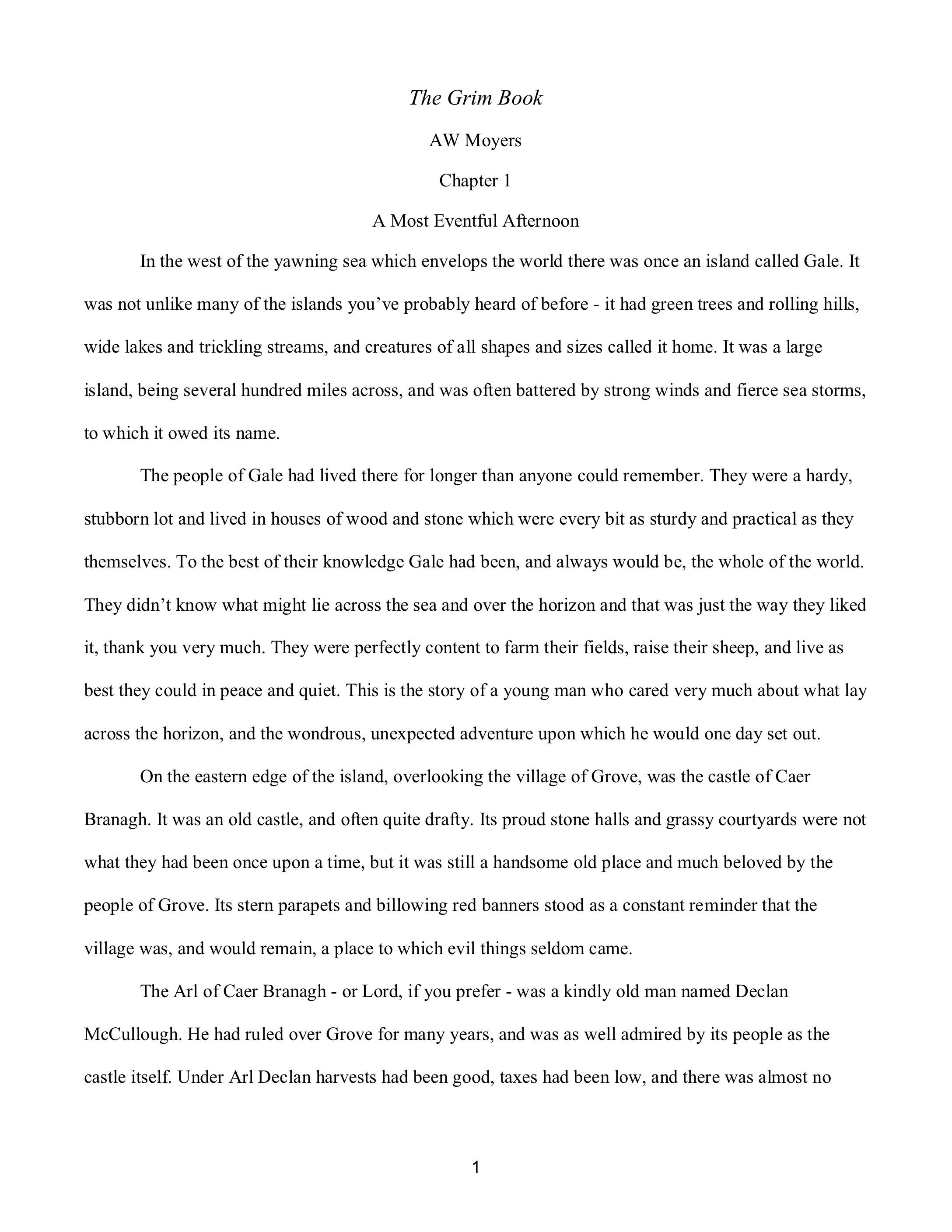
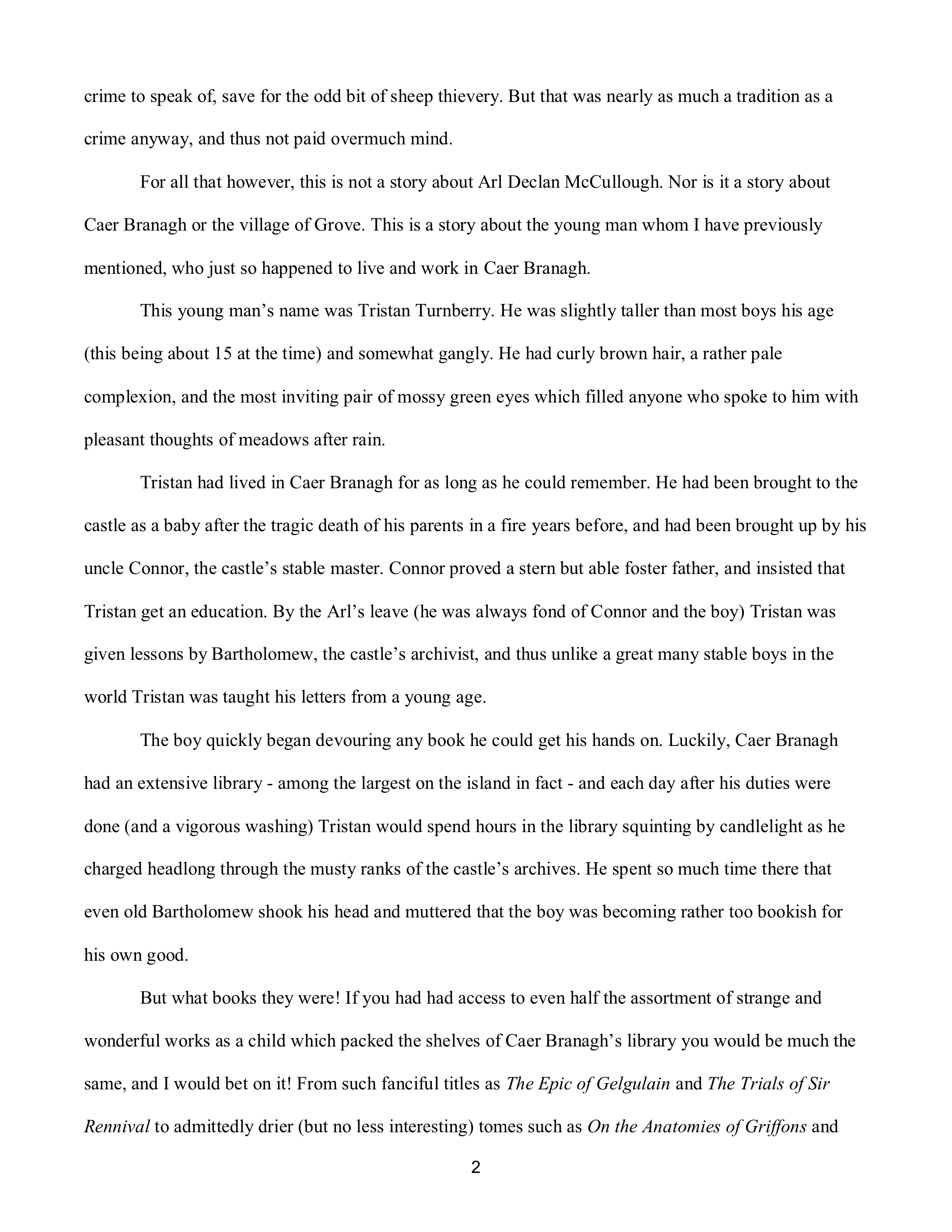
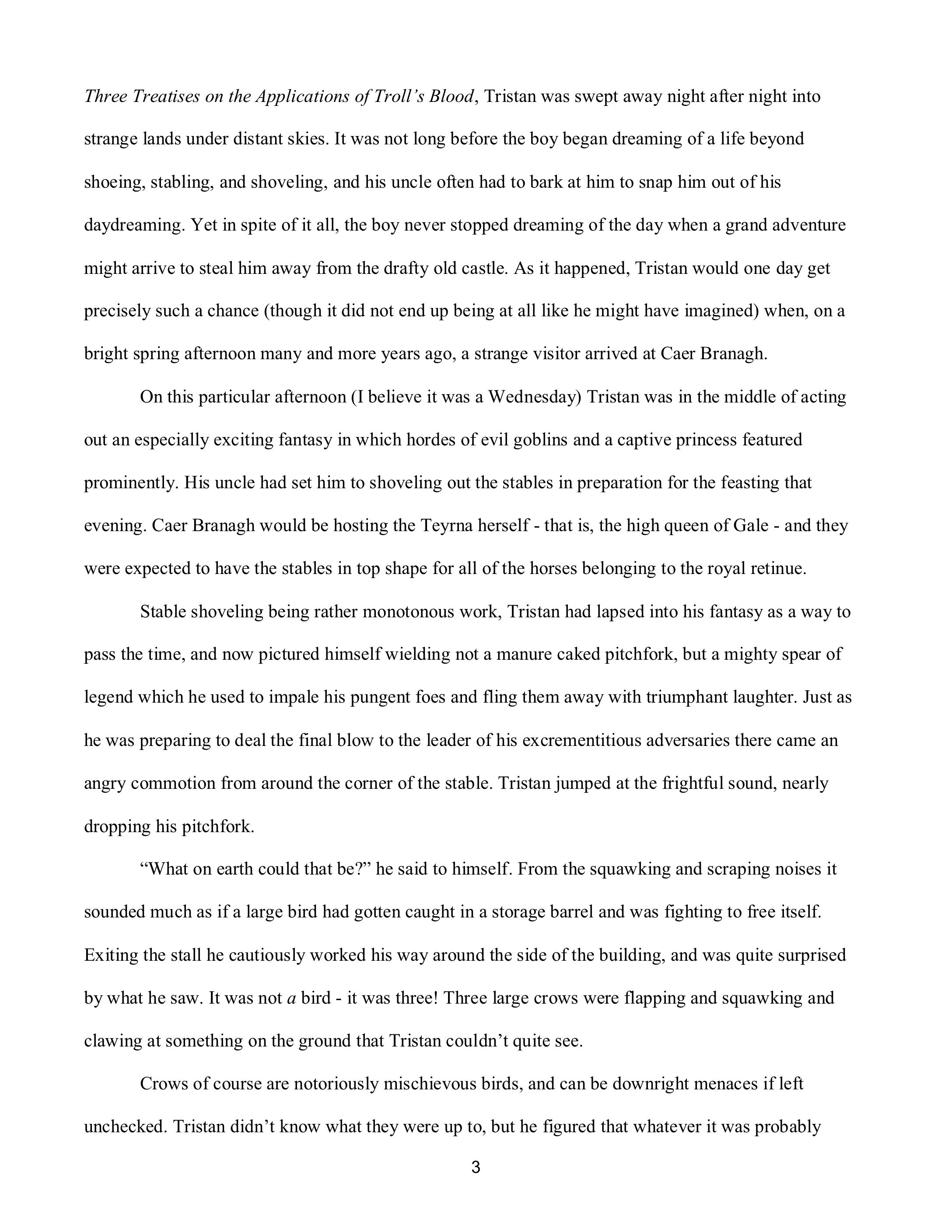
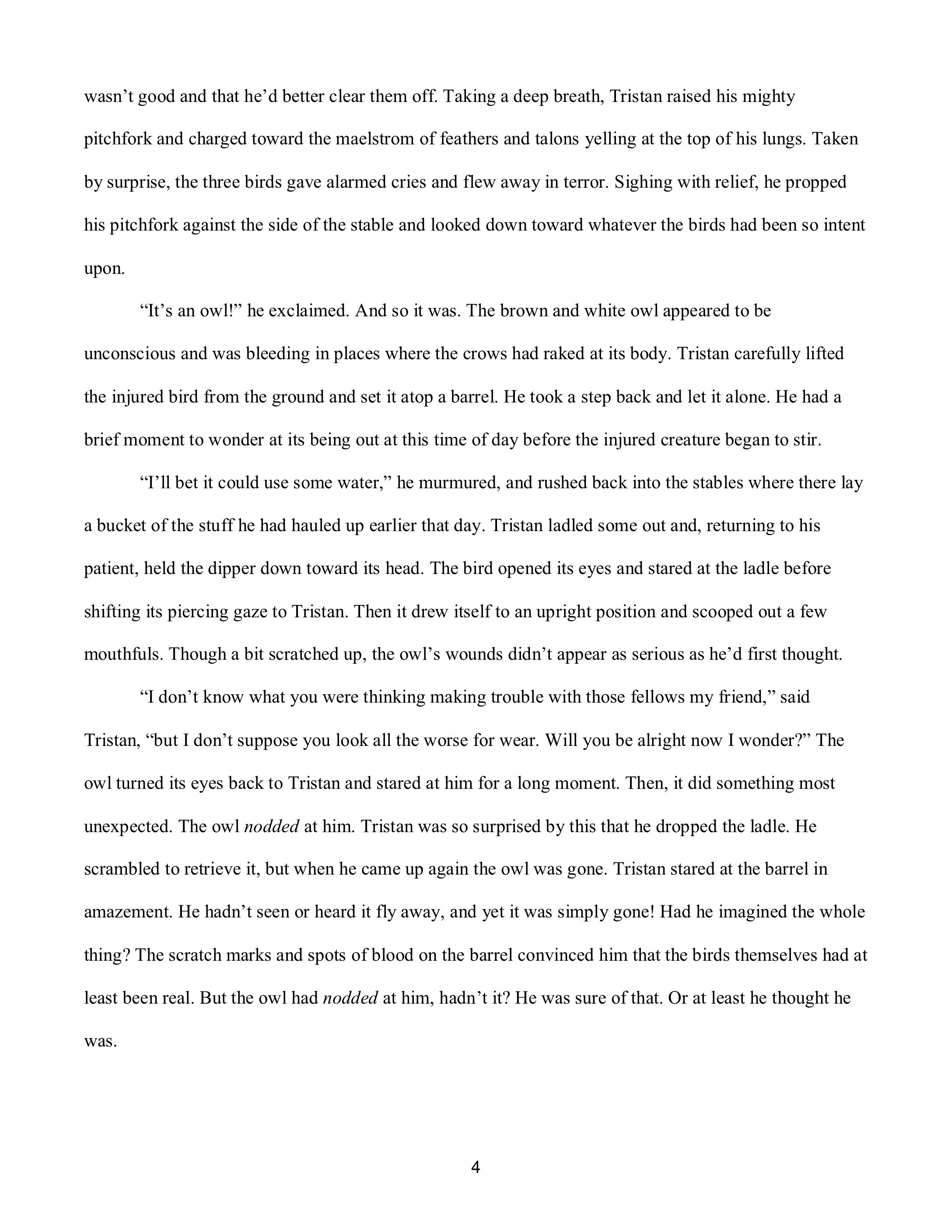
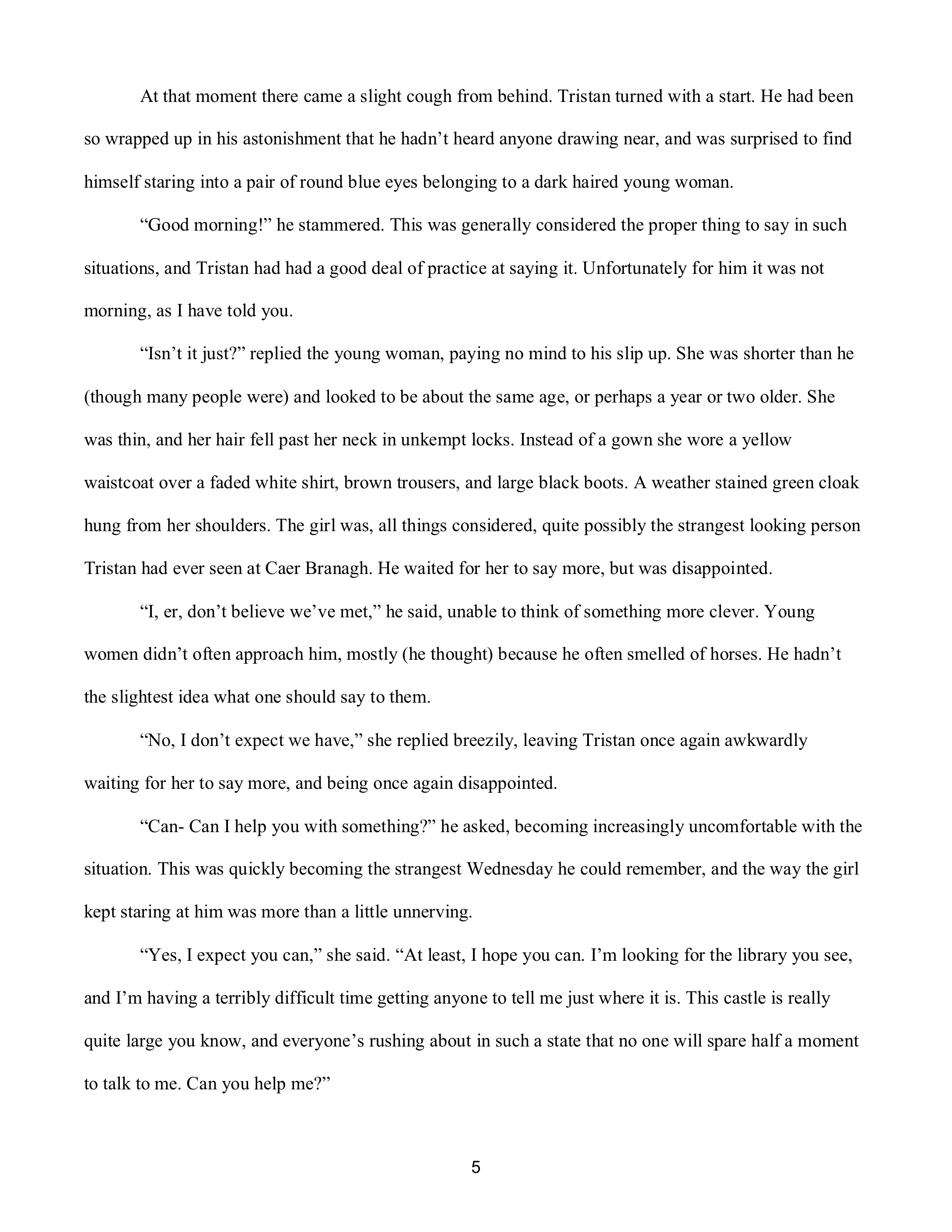
Scene Analysis
What are the character’s literally doing?
Tristan is daydreaming while cleaning out the stables and helps an injured owl that was attacked by crows. A young woman appears and asks for help finding the library.
What is the essential action of what the characters are doing?
This is hard to know from the outside looking in (but for your scenes, you’ll want to have a clear understanding). This is my best guess.
Tristan wants to avoid reality while completing the job.
What life values have changed for one or more of the characters?
We could say, Tristan’s day has gone from mundane to interesting, that he’s gone from being alone to having a companion, or that he went from being on task to being distracted. We could also say that he started with a firm grip on reality to some level of uncertainty.
Which life value change is most relevant to the main conflict in the story?
Based on the details offered in the opening, it’s fair to say we have a coming of age story combined with an adventure story. In Story Grid parlance, we would say that it is Worldview-Maturation combined with Action-Adventure. It’s unclear which is the primary content genre, so I’ll offer a suggestion for each.
For Worldview-Maturation, the life value moves from some level of naivete to some level of sophistication. Often we start with a protagonist who thinks they are sophisticated but is really naïve. I would pick a firm grip on reality to uncertainty. This appears to be naivete masked as sophistication changing to naivete—it seems to represent the first glimmer of recognizing that he doesn’t have everything figured out—despite his extensive reading.
For Action-Adventure, the life value spectrum includes life and death. Now, we have to do a little reading between the lines here. The narrator tells us that Tristan gets the chance for a grand adventure. So we can presume that Tristan is moving from safe (remember there is no crime to speak of here, so Tristan can count on a fairly safe life) to some level of unsafety or at least the potential for it. As the reader at this point, I don’t know for sure. But when you analyze your story as the creator who knows what happens, take that into account.
If we take the answers to these four questions and write a concise story event, we might say, when cleaning the stable for the queen’s visit, Tristan thinkshe sees an injured owl nod to him, and while trying to reassure himself, he encounters a stranger.
What is the Inciting Incident?
Tristan is assigned to clean the stables.
What are the Progressive Complications and the Turning Point Progressive Complication?
A loud noise distracts him, he discovers an injured owl, he cares for the owl. Then the owl nods to him.
What is the Crisis?
Did the owl really nod to him, or did he imagine it?
What is the Climax?
“He was sure of that. Or at least he thought he was.”
What is the Resolution?
Tristan is distracted by the events and his doubts when a young woman approaches him and asks for help in finding the library.
Takeaways for our author
So what does this tell us? If we have an accurate picture of the scene, then we can see the following.
The scene turns, that is, there is a change from the beginning to the end of the scene.
The scene has all Five Commandments of Storytelling.
The life value change seems relevant to the overall story, whether the internal or external are the primary story line.
Each commandment seems relevant to the main conflict in the scene, and the main conflict in the scene seems relevant to what I believe will be the main conflict within the story.
Tristan's literal and essential actions seem consistent, and it appears that his essential action is consistent with his needs and wants of the primary story.
The author would want to consider this in light of what they know about the rest of the story, especially if any of my assumptions are wrong, but overall, we have a solid working scene here.
Editorial Mission—Analyze your scenes
To analyze a scene and find out whether it works, we interrogate it. The questions to help you analyze scenes are adapted from the Story Grid methodology, created by Shawn Coyne. You can also apply the questions to a story you love to find out what makes it work.
After reading the scene carefully, ask the following questions:
What are the characters literally doing? What's happening on the surface?
What is the essential action? What does your POV character want in the scene?
What life values have changed for one or more of the characters?
Which life value change(s) is most relevant to the primary story?
Then identify the Five Commandments of Storytelling in your scene. I've included some extra questions to help you identify the Commandments.
Inciting Incident
What upsets the status quo?
What does the character desire when that happens?
What goal (essential action) do they adopt as a result?What are the Progressive Complications and Turning Point Progressive Complication?
What action does the character take in pursuit of their goal?
What obstacles do they encounter?
Do they find any tools or other help?
What unexpected event forces a dilemma?Crisis
What is the dilemma the character faces?Climax
What do they decide?
What action do they take?Resolution
How does it work out?
What are the consequences that flow from the action taken?
Once you’ve gathered that information ask yourself, these questions:
Does your scene turn? That is, is there a change from the beginning of the scene to the end?
Have you established all Five Commandments of Storytelling? Could they be made stronger?
Is the change that happens within the scene relevant to the overall story? In other words, do the events of the scene make it more or less likely that the protagonist will be successful?
Is each commandment relevant to the main conflict in the scene?
Is the main conflict in the scene relevant to the main conflict within the story?
Is the character’s literal action consistent with their essential action? In other words are their actions consistent with what they want in the scene?
Is the character’s essential action consistent with their overall story goal?
Don’t worry about getting the answers right or perfect and don’t get stuck in analysis. Work through the questions quickly with the intention to find out what’s really happening in the scene and why it matters to your story.
Your analysis and understanding of the scene may change over time. That’s normal. As you practice, you’ll become more comfortable with the process and will develop a deeper understanding that will support you in drafting and revising your scenes.
Above all, don't beat yourself up if some or most of your scenes don't work. This is normal too. Once you know, you can do something about it, and you're scenes will improve over time when you become familiar with these concepts.
Image courtesy of getstencil.com and Marc Marchal on Unsplash.com
